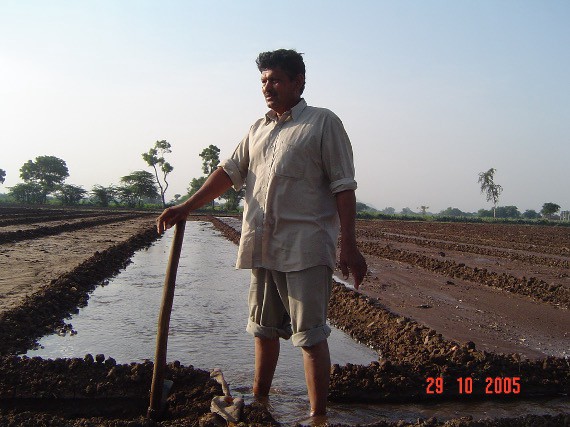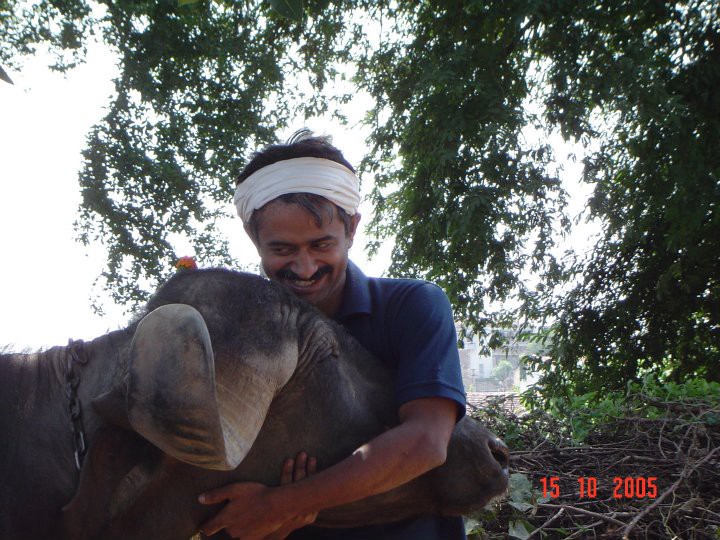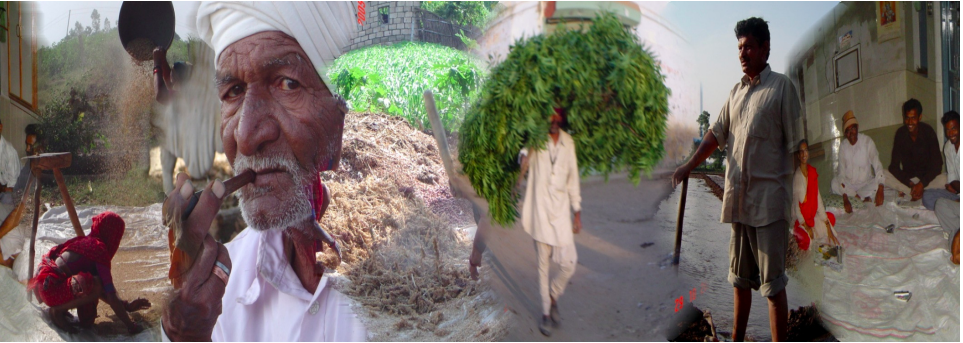Ten principles of rural ethnography
Of the various forms of research, few come close to ethnography in terms of its experiential power to evoke a really deep understanding of the subjects and the issues, the authenticity of the insights, the possibilities of connecting dots, and finding patterns across a multitude of stimuli. What makes it particularly appetizing is the need for us to immerse ourselves into the culture, the rituals and habits of the everyday life of the subjects, even participate in it. A form of research, where we are the observer, the explorer, the investigator, and the participant all at once.
Within the world of ethnography, rural ethnography is unique in its own way. We have distilled some best practices for conducting good rural ethnographic research that we have learned over the years through fieldwork and conversations with rural communities across India.

- Adjust to the time zone: We come from the treadmill of urban life. We are adept at creating a sense of urgency in ourselves and others who surround us, whether it’s required or not. We are linked symbiotically in creating breathlessness for each other. The villager, specifically the farmer works harder and is busy throughout the day, he is however in a quieter, softer time. He does not run, he walks. He does not swallow, he chews. Good rural research is impossible if a person in a village is pushed into our construct of time. To connect with the farmer and put him at ease, we need to above all acclimatize to his time zone. This means settling down into the rhythm of the village life quickly. It means avoiding the trap of constant clock-watching. It means being unhurried. That is what leads to ‘being on the same wavelength’ in the context of rural research. This may take one full day, even a few days of spending time in the village. Finding a calmer person, maybe the occasional idler, and staying away from the typical highly focused ‘what’s next go-getter’ while choosing a researcher may not be a bad idea
- Establish a connection: Try taking the state bus to the village, maybe the phatphatiya ( a local rickshaw). Try being dressed in a simple outfit. Floaters ( rather chappals) may work better than shoes. Tucked in shirts are avoidable. Closer we get to being one of them, the greater the chance of a good conversation. And of course, if we are comfortable walking through the slush and the fields; if we are comfortable handling cow dung cakes and can naturally be friendly with their livestock, that would be outstanding. The other important aspect of building a connection is to have a genuine, consuming interest in their lives, their problems, and their stories. If you are not interested in a genuine manner, most rural folks sense it and switch off eventually. Their stories may have no immediate and apparent relevance to your study. There could be family rivalries, gossip of a bharwad (people who sheep-herders) having a fling with a neighbor’s daughter, health problems, the birth of a calf, or very often religious activities such as satsangs, bhajans. If you are interested, engage. If you are not interested, try to cultivate one. And finally, interact with respect, sensitivity, and a spirit of lightheartedness without being frivolous.
- A window into your life first: Expecting them to answer questions about their life, their family, their work, pressures, etc. works best only if you have given them a glimpse of your life. The more they know you, better is the chance of them trusting you. And better are the chances of great conversations. Showing them a photograph or two of your family and kids, your parents, your workplace, telling them a story or two about your childhood in your village or experiences of your visits there works well. When you have told all you can about yourself, when they have seen your world, they start talking more openly and more deeply.
- Conversations: Once you hit the rhythm of the village life and tune-in to its wavelength, conversations are the first by-product. And the objectives of a study in turn become a by-product of such conversations. Getting comfortable with ‘conversations creating research as against research creating conversations’ maybe central to effective rural ethnography. This also means that the incidence of chance findings is high and often, they end up being more powerful than the planned findings.
- Honesty is reciprocal: Shun the industry practice of not disclosing the purpose of your visit or holding back the name of the company or the brand you are doing the study for. If farmers or the village folk are not sure of the purpose of your visit, they are not sure of you either. The worry about biasing them is often unfounded, as companies and brands are relatively less important in the overall context of their lives. You will end up getting the right answers more often than not. When you stay with the farmer for a couple of days or a few days, you can’t hide unlike in a 90-minute focus group. In ethnography, honesty evokes honesty — acting evokes acting. And lies evoke damn lies.
- Avoiding urban research stereotypes: We have found, in our experience, that good rural studies happen when you jettison the standard urban research practices. Impose the urban standard and it often ends up in a big mess. For instance, if you try to organize a group in a village; One focus group could have 3 people in it and another could have a dozen people. The situation and circumstance decide the size of the group. One focus group could start with 3 people and gradually swell in size to over a dozen people. People sauntering in and out of a discussion is quite common and should be allowed. Interruptions sometimes add to the discussion and the new person brings in a new perspective. There is no predetermined location for a focus group. It can happen anywhere, wherever it is destined to be. Don’t fight it. Neither is there a circular seating arrangement with the moderator at the apex. They will be seated behind you, by your side, in front and sometimes even peeping from a nearby window. Often you do a group when you find people sitting in a group. So carry your recorders around wherever you go.
- Active Ethnography: Rise early and go to their fields along with them. Don’t just sit by and watch them work. Don’t be the typical ‘ethnographer’ just observing and taking notes. Work alongside them and watch them work.Drive the tractor and plough the field a bit if you can. Help them cook, and wash the vessels along with them. Farmers work hard and respect people who can do the same. Be of help to them and they will end up being helpful to your work.
- Integration: Assimilating into their daily life and customs is key — sit where they sit, sleep where they sleep, eat what they eat and eat where they eat, etc. If you are a male, stay away from bantering with the womenfolk — this is an absolute no-no in many parts of the country. Cooking along with them in the kitchen is a great way to connect if you are a woman and bathing at the village pond or sharing a drink along with them is typical if you are a male
- Keep in touch if possible: Given the personal nature of this methodology, the farmer/ villager starts to bond with you. And so does their family. If possible, take phone numbers and keep in touch, like you would do with your prospective clients or customers. They have played a great host to an unknown person from the city and this despite all the discomfort they would have undergone as a result of your visit.
- Key equipment: A mosquito repellent coil or cream is an absolute must. Poor sleep leads to poor research!
Of the various forms of research, few come close to ethnography in terms of its experiential power to evoke a really deep understanding of the subjects and the issues, the authenticity of the insights, the possibilities of connecting dots, and finding patterns across a multitude of stimuli. What makes it particularly appetizing is the need for us to immerse ourselves into the culture, the rituals and habits of the everyday life of the subjects, even participate in it. A form of research, where we are the observer, the explorer, the investigator, and the participant all at once.
Within the world of ethnography, rural ethnography is unique in its own way. We have distilled some best practices for conducting good rural ethnographic research that we have learned over the years through fieldwork and conversations with rural communities across India.
- Adjust to the time zone: We come from the treadmill of urban life. We are adept at creating a sense of urgency in ourselves and others who surround us, whether it’s required or not. We are linked symbiotically in creating breathlessness for each other. The villager, specifically the farmer works harder and is busy throughout the day, he is however in a quieter, softer time. He does not run, he walks. He does not swallow, he chews. Good rural research is impossible if a person in a village is pushed into our construct of time. To connect with the farmer and put him at ease, we need to above all acclimatize to his time zone. This means settling down into the rhythm of the village life quickly. It means avoiding the trap of constant clock-watching. It means being unhurried. That is what leads to ‘being on the same wavelength’ in the context of rural research. This may take one full day, even a few days of spending time in the village. Finding a calmer person, maybe the occasional idler, and staying away from the typical highly focused ‘what’s next go-getter’ while choosing a researcher may not be a bad idea
- Establish a connection: Try taking the state bus to the village, maybe the phatphatiya ( a local rickshaw). Try being dressed in a simple outfit. Floaters ( rather chappals) may work better than shoes. Tucked in shirts are avoidable. Closer we get to being one of them, the greater the chance of a good conversation. And of course, if we are comfortable walking through the slush and the fields; if we are comfortable handling cow dung cakes and can naturally be friendly with their livestock, that would be outstanding. The other important aspect of building a connection is to have a genuine, consuming interest in their lives, their problems, and their stories. If you are not interested in a genuine manner, most rural folks sense it and switch off eventually. Their stories may have no immediate and apparent relevance to your study. There could be family rivalries, gossip of a bharwad (people who sheep-herders) having a fling with a neighbor’s daughter, health problems, the birth of a calf, or very often religious activities such as satsangs, bhajans. If you are interested, engage. If you are not interested, try to cultivate one. And finally, interact with respect, sensitivity, and a spirit of lightheartedness without being frivolous.
- A window into your life first: Expecting them to answer questions about their life, their family, their work, pressures, etc. works best only if you have given them a glimpse of your life. The more they know you, better is the chance of them trusting you. And better are the chances of great conversations. Showing them a photograph or two of your family and kids, your parents, your workplace, telling them a story or two about your childhood in your village or experiences of your visits there works well. When you have told all you can about yourself, when they have seen your world, they start talking more openly and more deeply.
- Conversations: Once you hit the rhythm of the village life and tune-in to its wavelength, conversations are the first by-product. And the objectives of a study in turn become a by-product of such conversations. Getting comfortable with ‘conversations creating research as against research creating conversations’ maybe central to effective rural ethnography. This also means that the incidence of chance findings is high and often, they end up being more powerful than the planned findings.
- Honesty is reciprocal: Shun the industry practice of not disclosing the purpose of your visit or holding back the name of the company or the brand you are doing the study for. If farmers or the village folk are not sure of the purpose of your visit, they are not sure of you either. The worry about biasing them is often unfounded, as companies and brands are relatively less important in the overall context of their lives. You will end up getting the right answers more often than not. When you stay with the farmer for a couple of days or a few days, you can’t hide unlike in a 90-minute focus group. In ethnography, honesty evokes honesty — acting evokes acting. And lies evoke damn lies.
- Avoiding urban research stereotypes: We have found, in our experience, that good rural studies happen when you jettison the standard urban research practices. Impose the urban standard and it often ends up in a big mess. For instance, if you try to organize a group in a village; One focus group could have 3 people in it and another could have a dozen people. The situation and circumstance decide the size of the group. One focus group could start with 3 people and gradually swell in size to over a dozen people. People sauntering in and out of a discussion is quite common and should be allowed. Interruptions sometimes add to the discussion and the new person brings in a new perspective. There is no predetermined location for a focus group. It can happen anywhere, wherever it is destined to be. Don’t fight it. Neither is there a circular seating arrangement with the moderator at the apex. They will be seated behind you, by your side, in front and sometimes even peeping from a nearby window. Often you do a group when you find people sitting in a group. So carry your recorders around wherever you go.
- Active Ethnography: Rise early and go to their fields along with them. Don’t just sit by and watch them work. Don’t be the typical ‘ethnographer’ just observing and taking notes. Work alongside them and watch them work.Drive the tractor and plough the field a bit if you can. Help them cook, and wash the vessels along with them. Farmers work hard and respect people who can do the same. Be of help to them and they will end up being helpful to your work.
- Integration: Assimilating into their daily life and customs is key — sit where they sit, sleep where they sleep, eat what they eat and eat where they eat, etc. If you are a male, stay away from bantering with the womenfolk — this is an absolute no-no in many parts of the country. Cooking along with them in the kitchen is a great way to connect if you are a woman and bathing at the village pond or sharing a drink along with them is typical if you are a male
- Keep in touch if possible: Given the personal nature of this methodology, the farmer/ villager starts to bond with you. And so does their family. If possible, take phone numbers and keep in touch, like you would do with your prospective clients or customers. They have played a great host to an unknown person from the city and this despite all the discomfort they would have undergone as a result of your visit.
- Key equipment: A mosquito repellent coil or cream is an absolute must. Poor sleep leads to poor research!




